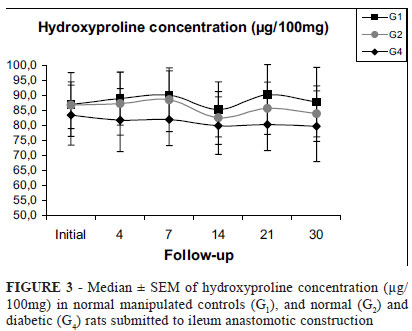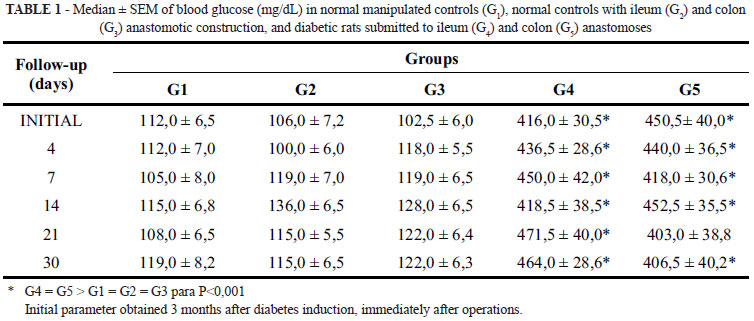PURPOSE: To investigate if diabetes mellitus may alter breaking strength (BS) and collagen content in ileum and colon anastomoses in rats. METHODS: Three-hundred Wistar rats were randomly assigned to 5 experimental groups, 60 per group: normal controls surgically manipulated (G1); normal controls submitted to ileum (G2) and colon (G3) anastomotic construction; diabetic rats submitted to ileum (G4) and colon (G5) anastomotic construction. Each group was further divided into 6 subgroups with 10 rats each for sacrifice at 0, 4, 7, 14, 21, and 30 days after surgery. All surgical procedures were performed 3 months after alloxan diabetes induction. BS was measured in all intestinal anastomoses. Fragments of ileum and colon anastomoses were taken for hydroxyproline concentration (HP) and total tissue protein (TP) dosages. RESULTS: Anastomotic BS was significantly decreased (P<0.05) in ileum and colon of G4 and G5 diabetic groups up to 7 and 14 days after surgery, respectively, compared with G2 and G3 normal control groups. Anastomotic HP and TP content did not significantly differ between diabetic and normal control operated groups in ileum or colon at all evaluation times. CONCLUSION: Experimental diabetes leads to impaired intestinal anastomotic strength during early surgical wound repair, but does not appear to be implicated with collagen synthesis capacity.
Diabetes Mellitus; Wound Healing; Ileum; Colon; Rats







